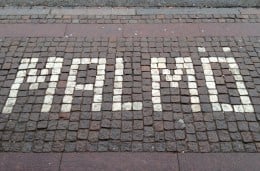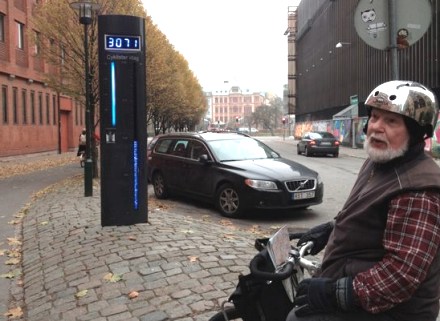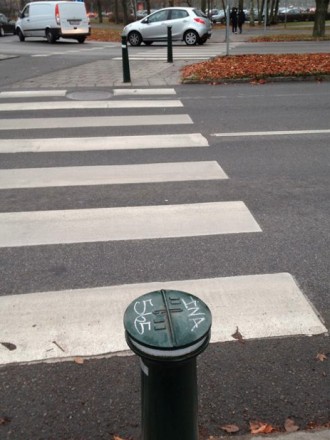— This guest article was written by Denver Igarta. Denver is a transportation planner with the City of Portland who’s on a study trip in Europe funded by the German Marshall Fund.

(Photos: Denver Igarta)
Malmö, Sweden is the place bikeway inventions are born.
The city its first bicycle plan way back when I was two years old (1976 if you’re wondering). Even before that time, they have been leading the charge to create bicycle-friendly communities. It was back in the 1960s when they decided to invest in a system of segregated cycle tracks on major roadways. It must be strange for them to hear bicycle planners from other cities talk about their “breakthroughs” in bikeway design. Oh yes, we did that over 20 years ago, might be the response.
“I felt like Charlie Bucket being led through the Wonka chocolate factory by the great Willy Wonka himself.”
Despite the already high proportion of trips made by bike (or perhaps because of it), bicycle ridership in the city continues to grow. They saw bicycling jump from 20% to 30% of all trips since the late 90s – which is not an easy task. There are now 260 miles of bikeways in Malmö and about 40% of all journeys to and from work are made by bicycle.
Since arriving in Sweden, I have had the great privilege to be hosted and led around town by Leif Jönsson, manager of the bicycle program in the municipality’s traffic division. He has a modest disposition despite being the brains behind many of the bikeway innovations that are not only found in Malmö but have made their way to some of the world’s best bicycling cities. On Monday afternoon, we took a three hour bike tour around town. I felt like Charlie Bucket being led through the Wonka chocolate factory by the great Willy Wonka himself. It’s a bicycle wonk’s (sorry for the bad pun) dream come true! I thought I’d share just a few highlights we encountered along the way.
Leaning rails at signals

The hand and foot railings at traffic signal is the bicycling equivalent to the cup holder on your car’s dashboard. You know you are in a City with advanced bicycling infrastructure when it offers this level of comfort and convenience on bikeways. If you find yourself stuck at a signal, just kick up your foot and take a rest against the rail.
Public air pumps

There is no need to search out a gas station to inflate a flat or low tire in Malmö. Public air compressors have been placed at strategic locations to create mini service stations for people on bicycles. If we had this in Portland, I’d lose my only regular upper body exercise – the floor pump.
Bicycle counters

Bicycle barometers count passing cyclists and provide a visual indication of cycling levels each day at key intersections in Malmö. People on bikes can see that their trips count as they pass the site. The permanent installation allows them to see the change in cycling numbers throughout the year. Winter ridership numbers are a whopping 80% of volumes in the Summer.
Radar bicycle traffic sensors

In Malmö, the signals are watching you. And if you’re on a bike, you might be rewarded. Small sensors have been fitted above the signals at around thirty intersections in Malmö to detect approaching cyclists. Once detected, the bicycle signals quickly turn green. I was told that the radar costs fraction of loop detectors in the pavement which require tearing up the pathway surface to replace.
Bike lounge

The newly opened City Tunnel, built to shorten the travel time between Copenhagen and Malmö, has brought with it two new stops (underground stations) within the city limits. The Hyllie Station is equipped with a state-of-the-art “bike and ride” facility. The garage not only accommodates a thousand bikes in both open and secure facilities, it offers a repair station and waiting room for those who arrive by bicycle.
Braille bollard

One of the coolest bits of infrastructure I saw was actually for people on foot. Small bollards have been placed at crossings of major and minor roadways. The cap of the bollard has a tactile diagram for those with impaired vision to inform them of the number of lanes they must cross and of the presence of a median refuge.
— Read more dispatches from Denver’s Trip on his blog.

